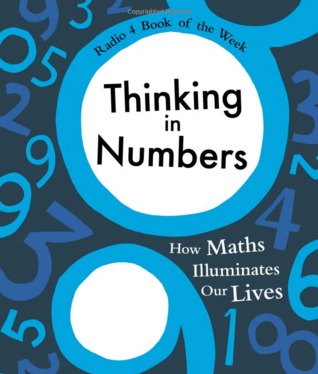Sometimes, when I have a book out from the library, I wind up buying it, and Daniel Tammet’s Thinking in Numbers: On Life, Learning, Love, and Math is one that I ordered before I had finished reading it. Tammet is on the autism spectrum, and his book’s title pays homage to Temple Grandin’s Thinking in Pictures, and its spirit is very Math Curse.
Tammet has mathematical synesthesia, and there’s a fun part in his autobiography Born on a Blue Day (which I got out from the library but felt less urgently about possessing) where he draws, as best he can, the shape of sequences of pi’s digits, as they strike him. But a lot of Thinking in Numbers relies less on his particular sensory gifts and more on his appetite for joy and curiosity.
Here’s one of the first passages I dog-eared, which followed Tammet’s explanation of the way that that Icelandic has different number words for numbers in the abstract (two) vs counting objects (two shoes) and several other variations:
With time and practice, I have learned all these words, more words for the numbers one to four than has an English speaker to count all the way up to fifty. In English, I would suggest, numbers are considered more or less ethereal–as categories, not qualities. Not so the smallest numbers in Icelandic. It is as though each corresponded to a delicate nuance of color. Where the English word “red” is abstract, indifferent to its object, words like “crimson,” “scarlet,” and “burgundy” possess their own particular shade of meaning and application.
Or later, when he’s describing how he didn’t do well with the traditional way of solving for (isolating) x in algebra class:
Take x^2+10x = 39 for example. Such concoctions made me wince. I much preferred to word it out: a square number (1, or 4, or 9, etc.) plus a multiple of ten (10, 20, 30, etc.) equals 39; 9 (3×3) +30 (3×10) = 39; three is the common factor; x=3. Years later, I learned that Al-Khwarizmi had written out all his problems, too.
I found this section just as startling and curiosity provoking as the Icelandic one. I’ve been doing algebra for ages, but I’ve always treated the shape of the question as irrelevant — simply bits to be moved around until I could pin down x itself. Pausing to notice whether I was using a square number only mattered when I was taking the root to neutralize it. Once I saw how Tammet was working his problems, I had to try a couple his way, and I really enjoyed the different sort of puzzle it turned the problems into.
And what I’m still turning over in my head is whether I’ve acclimated to this narrow “isolate the variable of interest” approach anywhere besides algebra and could benefit from noticing and practicing the skill of pausing to see how all the pieces relate in this particular problem. What a delight.
Sorry for the relative radio silence — I’m still working out a way to fit blogging around my work. I’m planning to focus on shorter posts for the next few weeks to build up the habit/test-drive my replanned writing schedule.













